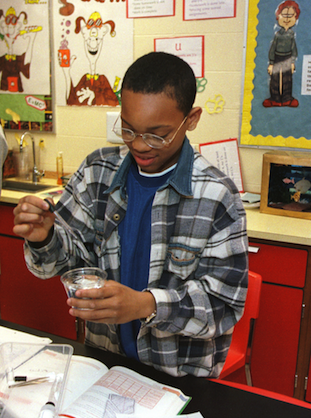When Teachers Engage, Their Students Behave
I started teaching at a middle school in Oakland, Calif., about 20 years ago. My first year was pretty rough. I was prepared to teach science, but my first semester I was given two periods of beginning Spanish, one of English, and two of science. My credential program had not really dealt much with behavior issues. The idea was to deliver a rich curriculum, and the management would take care of itself. If you are already teaching, you know this does not always work.
I floundered a bit the first year or two, and took help wherever I could find it. My best resources came from my colleagues down the hall. They had been at the school a few years and passed along valuable ways to make things work.
Here are a few of the things I learned:

• I learned how important it was to phone parents early in the year, with positive news if at all possible. Then the first phone call would not be one from me complaining about their child’s behavior. One parent I phoned in September told me that mine was the first positive call she had ever received about her child. When I had to call about some problems a few months later, she was there to back me up 100 percent.
• I learned to balance a negative phone call with a positive one. The days after I would make phone calls, the students would often come in and ask me, “Why did you call my house?” It was great to be able to point out that I was working with their parents in their best interests, and that I would make positive calls when behavior improved. I also found that my own disposition greatly improved after I made a positive call.
• I learned to keep a record of student behavior, along with any referrals to the office, so that the problems I had with a few students were clearly documented. I kept a record of phone calls home in the same book.
• I learned how easy it was to get into entertaining but fruitless dialogues with students when I was trying to enforce rules. It took me a while, but eventually I learned the best method was to give a warning or consequence clearly, and allow for discussion only after class.
• I learned it was important for students to understand that I cared about their well-being, and that I was on their side. This was done through caring communication and showing an interest in them as individuals by giving attention to their interests and abilities. And also through developing assignments that gave them more than one way to demonstrate their knowledge. Some students shine when speaking to the class, others excel at creative projects that illustrate what they’ve learned.
• I tried using the textbook quizzes and tests, but found my students were performing miserably. These tests featured 40 multiple-choice questions that required memorization. My students refused to memorize the textbook facts—they were bored with that, and their behavior reflected their boredom. So I began to think about the main points I was trying to get across and looked for engaging ways to make those main points stick. Then I made my tests reflect those main points and found the students did much better.
Too much fun to misbehave
I also looked for different ways for students to demonstrate their understanding through more creative projects, and I found the students became even more engaged.
For example, when learning about states of matter, I had students team up and design their own experiments focusing on dry ice. They came up with ideas like measuring the amount of time the dry ice took to turn to vapor in different liquids; attempting to measure the temperature of the dry ice; or collecting and testing the vapor that the dry ice produced. After a review process, the teams carried out their experiments.
Then, each team created a display and presented their results to their classmates. In the process, they all learned about the properties of dry ice—that it turns to vapor much more quickly in water than in air, that frozen carbon dioxide is much colder than water ice, and that the vapor is heavier than air and puts out a candle. Their findings led us into other explorations of the states of matter. They were having too much fun to misbehave!
The secret to behavior management is really about having the students fully engaged in the learning process, and it involves more than just rules and office referrals. After all, the whole point of getting the class to focus is to do some meaningful work—to reach new understandings, to create new expressions of their knowledge, and to build new skills. But we have to know how to manage our teacher-student relationships in order to get there.
Anthony Cody (@anthonycody) spent 24 years working in Oakland schools, 18 of them as a science teacher at a high needs middle school. He is a National Board Certified Teacher (NBCT) and a Project Based Learning workshop leader. Visit his website Living in Dialogue. Cody’s current blog is a descendant of his policy-oriented Education Week blog which became a rallying place for teachers who value their professionalism. His book, The Educator and the Oligarch: A Teacher Challenges the Gates Foundation, was published in 2014.






































My almost 40 years as an educator have taught me the same lesson: you have to get teacher-student relationships right if you want students to do (and behave) their best. Get the relationships right (i.e., built on trust, caring, interest, clear feedback), add material and classroom activities that engage students as investigators and connectors, and see the positive energy.